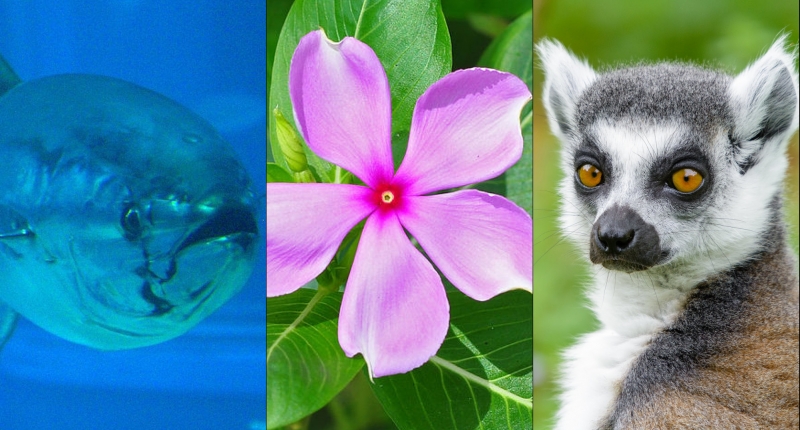Rare Species May Have Underestimated Value to Human Life

Bluefin tuna, Madagascar’s lemurs and rosy periwinkle, and California’s giant sequoias all have something in common – they are rare species, and saving the rare for their existence value has long been a focus of biodiversity conservation. But a team of ecologists from the NSF-funded Long Term Ecological Research Network is merging this old way of thinking with a new one: to improve biodiversity and prepare for an uncertain future under climate change, we need a better understanding of how rare species, which includes the threatened and endangered, tangibly benefit people.
In a paper published May 16th in the journal Trends in Ecology and Evolution, the research team lays out an agenda for improving our understanding of how rare species help support human lives and well-being. Their agenda represents a shift in how we think about conservation and is poised to help global policy initiatives responding to the world’s biodiversity crisis, illuminated by the recent report from the Intergovernmental Panel on Biodiversity and Ecosystem Services.
Few studies to date have put much effort into exploring how rare species contribute to the natural benefits that people depend on, called ecosystem services, because the running assumption is that their rarity insinuates ecological insignificance. So, we don’t know much about which of these species really matter to nature’s life-supporting services, such as storing carbon and providing food, and how much they matter.
“If rare species that are of the most interest to conservation also provide these benefits to people, it creates an added incentive to protect them,” said lead author Laura Dee, an assistant professor at the University of Minnesota.
For example, restoring populations of bluefin tuna could restore their role as a provisioner of food for people, and protecting giant sequoias can increase nature's carbon storage capacity.
Climate change is creating even more urgency to understand the roles of rare species and what losing them might mean. Dee says rare species may offer a kind of insurance against an uncertain future, and by overlooking them in research studies, ecologists risk missing opportunities to buffer the worst effects of climate change.
“Rare species tend to be the most different from some of the other species that we find in ecosystems. People are starting to think about whether that means, under climate change and novel conditions, they might play some unique role in the future that might not otherwise be represented by more common species,” said Dee.
Dee explained that conserving species based on their benefits to people under climate change may shift decision-making to focus on how the future might like look, rather than what conditions are like today.
In their study, Dee and her co-authors synthesized the studies that have explored the value of rare species to ecosystem services and proposed five categories of rare species that could guide further research:
- Species whose presence, not necessarily their abundance, provides conservation value, such as iconic species like whales and bald eagles
- Trophy animals, exotic pets, and other species that have scarcity value, which may actually compromise their conservation
- Species with unique functional roles that are critical to ecosystem service functioning, such as keystone species or plants that support soil fertility
- Species whose contributions scale with their abundance – in other words, the more abundant they are, the more they can support ecosystem services. This includes species that could contribute more if their ranges expand under climate change, or those with valuable genetic uniqueness, such as the Madagascar rosy periwinkle’s leukemia-fighting chemical compounds.
- Species that don’t seem to contribute much to ecosystem services and may thus become a lower conservation priority, such as the interestingly named, but otherwise mundane big bellied glandular bush-cricket, an IUCN red-listed species found in the eastern Balkans and Turkey.
Their paper represents collective knowledge gained from long-term research sites across the United States and beyond, and it illustrates the value of extracting the big picture from a synthesis of place-based research.
The research team is from the LTER synthesis working group called "Scaling up Productivity Responses to Changes in Biodiversity," which is organized by NCEAS.
